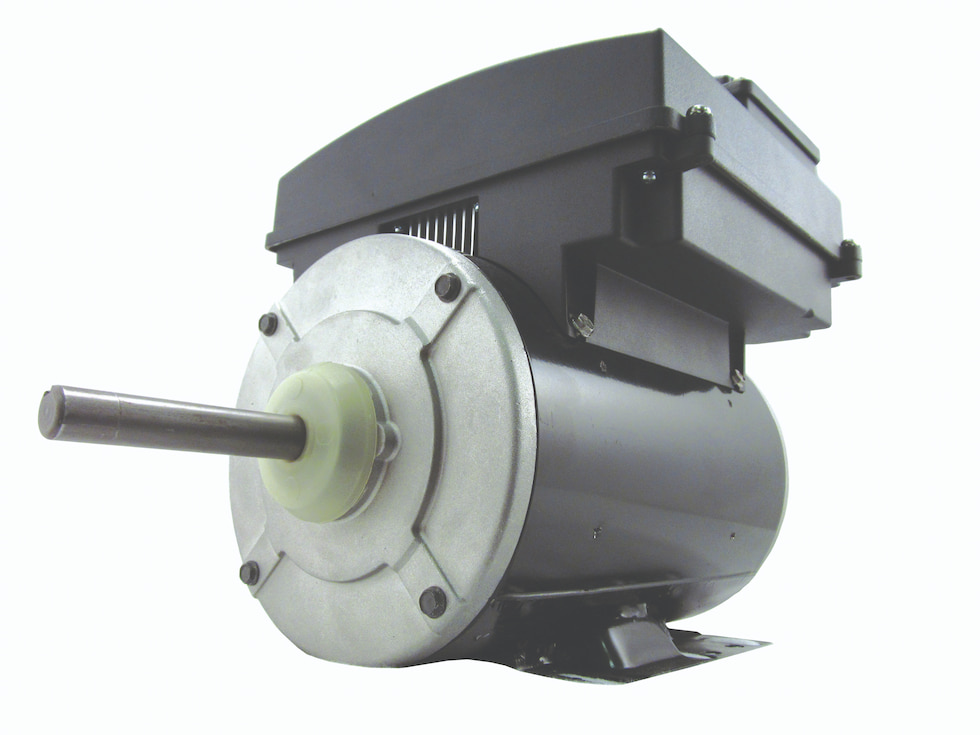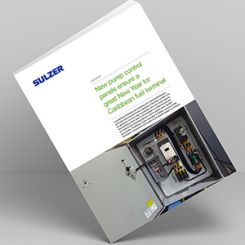
If you believe all the talk these days about variable speed pumping, you might conclude that inverter duty motors driven by variable frequency drives (VFDs) have taken over the entire motor pump industry.
That is not true. Some pumping applications are still, and will likely always be, best served with constant speed motors.
Still, in terms of rotodynamic pumping—including centrifugal, mixed, axial flow and other specialized pumps—the transition to VFD-driven inverter duty motors is real and it is accelerating.
Two decades ago, roughly 60 percent of new pump motor installations involved standard efficiency constant speed motors.
Ten years later, industry demand had shifted in favor of inverter duty products, with approximately two in three requiring variable speed. That shift has since continued, with VFDs included in as many as 80 percent of rotodynamic pump installations today.
VFDs control alternating current (AC) motor speed and torque by varying motor input frequency and voltage. They make it possible for pumping systems to change speed and maintain peak efficiency when output demand changes.
In practical terms, that means they require less energy to operate. By allowing motors to run at less than full speed, VFDs can yield energy savings of 20 to 30 percent, and possibly more with system optimization. By making constant pressure and flow possible, they also improve system reliability and overall performance.
The transition to inverter duty motors might have been even faster were it not for their use of pulse width modulation (PWM) to modulate the frequency and voltage supplied to the motor. While PWM power waveform makes it possible to control a motor’s speed, it also introduces electrical stress on motor windings, as well as induced shaft currents, voltage spikes and other harmful effects that can damage bearings and shorten motor life. The resulting repair costs have the potential to wipe out any savings generated by the VFD’s use.
The manufacturing community has responded by making significant investments in innovations to address these PWM-related issues. Inverter wire, for example, has been developed to minimize winding issues. Additional insulation treatments and materials, shaft grounding devices and other improvements provide bearing protection. As manufacturers succeeded in mitigating OEM concerns, these innovations evolved into standard product features.
If Manufacturers Build it, OEMs Will Come
Manufacturers also took another step that proved essential to the VFD revolution. As market acceptance grew, they began implementing these solutions in a larger range of motors, drives and pumps and methodically expanding to vertical turbine pumps used in municipal and industrial applications.
Meanwhile, a larger selection of integrated motors and drives for pool motors and smaller horsepower (hp) commercial hydronic systems has also started entering the market. Manufacturers have raced to expand the envelope of applications that can be addressed by these advanced, more efficient solutions, primarily on the smaller horsepower end of the spectrum. In addition, inverter duty vertical motors have become more commonly available off the shelf as standard catalog offerings to meet increased demand for variable speed motors in vertical turbine pump applications.
The availability of these expanded offerings is now helping to fuel the transition of the installed base of constant speed motors to their more efficient inverter duty counterparts. Likewise, demand for integrated motors and drives has grown as users seek to tailor pump systems to their applications.
The Race to Replace
Given that induction motors have, on average, a 17-year life, at least 25 percent of the current installed based could likely benefit from replacement motors. The question owners must now consider is, is the transition worth it?
The answer, most often, is yes. Consider that more than 65 percent of industrial power demand today comes from electric motor-driven systems. As much as 40 percent of all electricity used in industry is consumed by pump and fan systems. That makes these systems not only the biggest industrial energy users in the United States, but also the market with the greatest potential for energy savings.
Other research shows that as much as 99 percent of a motor’s life cycle costs are spent on the energy the motor uses. That makes them a strong candidate for VFD solutions that address the inefficient control methods that lead to motor system energy waste.
In addition to energy savings, many pump motors in the installed base will also benefit from the constant pressure and flow and improved system reliability that inverter duty motors make possible. The goal should not be to replace each one, but to focus on applications that can benefit from the use of a VFD to achieve the lowest cost and most reliable alternative. It will take process optimization to justify these upgrades.
Process Optimization
To achieve maximum pump motor efficiency and reliability, it is important to understand system demand and implement a solution to optimize the motor, drive, pump and overall process. This can include:
Moving from an open- to closed-loop system.
Some pumping systems have traditionally operated as open-loop systems, designed to maintain a constant flow and pressure. With these systems, an operator chooses the pressure and speed and lets the machine run. This “blind” control does not correct for errors or changes in process conditions.
With a closed-loop system, a pressure sensor can be added to the system, making it possible to measure pressure so the system can self-adjust. The operator selects a desired speed and pressure. But rather than running all the time, the control adjusts the pumps and drives to maintain speed and pressure.
The amount of energy saved by these additions depends on the operator’s ability to tweak the closed-loop process. That requires a focus on process measurement. To achieve the greatest control, it pays to use a pressure sensor with a high-resolution signal and drive to regulate temperature, flow, pressure, speed and other process variables in a system.
Rethinking pump selection and running time.
The optimization process also requires taking a close look at ways to optimize pumping efficiency based on load. Consider, for example, an operation that has a single 100-hp pump motor that runs continuously at a fixed speed, pressure and flow.
If that 100-hp motor is replaced with two 50-hp motors, production may start with only one pump in operation. When the pump reaches a set point, the second motor may kick on. As new lines are brought on or taken off production, the pumps can operate together or cycle back and forth. By sharing running time, wear and tear can be distributed evenly between the pumps.
An analysis of flow curves against head pressure makes it possible to determine the best way to sequence pump operations to produce optimal pressure. Energy use can also be evaluated to create a load duty cycle that describes the production schedule and process loads associated with different levels of production.
Process optimization, in other words, both increases energy savings and maximizes the return on investment of inverter duty upgrade projects.

